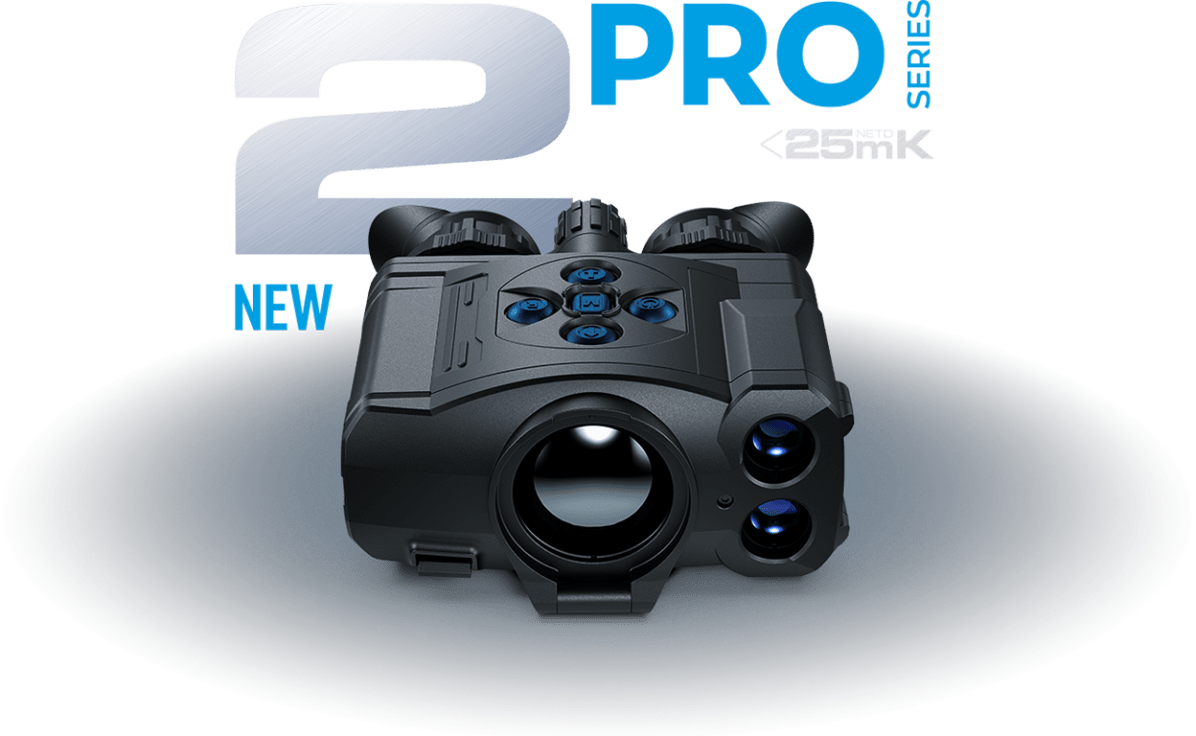Binoculars for thermal imaging
Greetings and feel welcomed to yet another article by Thermodevices.eu . We proceed by outlining the fundamental characteristics of each type of NV optical gadget that is offered on our website. The topic of this article is binoculars using infrared thermography. Just a limited number of designs exist as of 2019. Nevertheless, they spark a lot of client curiosity, therefore it only seems reasonable to go into further detail about this subject.
2018 saw the success of Pulsar’s Accolade XP50 and Accolade XQ38 thermal imaging binoculars. They are the only 2 producers that have reduced the cost of these NV devices to the point where civilian consumers may purchase them, together with ATN. The Canadian GSCI is another flourishing business that specialized in NV optics.
In the same way as scopes, monoculars, and clip-on systems are typical thermal imaging equipment, so are thermal imaging binoculars. The consumer may now utilize both eyes, which is the sole physical difference. This implies that a thermal imaging binocular may have two monitors or just one monitor jointly with a system prisms. However, there is no real distinction in the technology used or resolution.
Comparing it to other equipment of this nature, thermal imaging binoculars are extra pricey. In comparison to a monocular gadget with similar features, they often have a higher cost of around 600–1000 euros. The cost difference is due to the inclusion of a second monitor, a second eyepiece, and a larger housing. Naturally, all that increased convenience comes at a cost.
Which equipment type is optimal, is a hotly debated topic. The fact that every thermal imaging equipment has bright screens is a factor that favors binoculars. Owners of gadgets which just utilize 1 eye for observation have a clear disadvantage. Because of the lower light levels in the natural environment, just one of the pupils expands while looking at a screen with high brightness. For the operator, this artificial difference can occasionally be unpleasant or even confusing. And since the user utilizes both eyes and there is no variation in pupil diameter, binoculars provide a solution to this problem.
However, other people state that using monoculars makes it possible to go more quickly from observing to firing. This is due to the fact that they utilize one eye for the night vision monocular and the other for the riflescope. If so, individuals don’t have to wait long for both of their eyes to adjust to the surrounding brightness. It ultimately boils down to the customer’s wishes.
Binoculars’ drawbacks include their heavier and larger shape. The majority of models employ thermal sensors with a resolution of 640 x 480 or 380 x 280 pixels as of 2019. Monitors are the same way. Larger display devices are uncommon. In reality, the handful 1260 x 800 thermal imaging equipment which is offered for sale on the public market are also the most pricey ones available.
Thermal imaging binoculars, as well as other gadgets in this field, employ similar tech, as we’ve already said. No IR illumination is required because they can detect heat. Both throughout the day and at night, these optical instruments operate equally well. They are more flexible because of their dual purpose.
Additionally, thermal imaging binoculars have incredibly large detection ranges. Thermal imaging equipment are the right choice when compared to traditional NV optics, which make it nearly impossible to see anything more than 300 meters. Thermal imaging devices allow the user to locate a heated object or a creature from a two kilometers distance.
It must also be noted that when range is an advantage, some detection ability is lost. In other words, thermal imaging equipment only can identify heat, such as in warm areas of an animal, but traditional night vision optics display the full object. Due to the fact that some animal parts such as horns and hooves are cold and won’t appear on the monitor, thermal imaging technologies make it nearly impossible to reach the game’s award.
Regarding enhanced resolution of thermal imaging equipment, the previous five years have been revolutionary. One function which will definitely become better with time is this one. Additionally, pixel size is decreasing.Although several 12-micron pixel products have just been introduced, Pulsar Accolade thermal imaging binoculars have a 17-micron pixel pitch.
It’s also noteworthy to mention that certain thermal imaging binoculars resemble the operation and feel of conventional mechanical binoculars on purpose. Similar to daylight binoculars, they include a focusing wheel in the center and diopter correction rings round both eyepieces. In some cases, the operator can alter the interpupillary distance.
Let’s now discuss the magnification capabilities available in this group of devices. The amplification of digital equipment is mostly dependent on the diameter of the optical lens and the class of the sensor, although it starts at 3x. However, every thermal imaging gadgets at the minimum those sold for civil use—uses digital technology.
When using a digital version, the user interface may be used to change the amplification setting. Another name for it is “digital zooming.” Magnification capabilities of Pulsar’s Accolade XQ38 and Accolade XP50 are set at 3–18x and 4–20x, respectively. However, the fundamental concept of analog night vision equipment is that the operator is enlarging the image and increasing the pixel size. This implies that the resolution quality decreases as the amplification power increases.
As opposed to night vision gadgets, which use an IR illuminator, thermal imaging equipment is reliant on heat sensors. Nevertheless, there has been a lot of discussion regarding fusion devices, which incorporate both ideas into one device. Maybe there is something more to watch out for down the road with this as well.
The introduction of laser rangefinders to thermal imaging equipment is one more improvement. Pulsar has already made progress in this area. They intend to release Accolade devices with an integrated LRF in 2019. Although in the future, laser range finding should be available in all thermal imaging binoculars. It happens because utilizing a thermal imaging technology to establish the range can be quite challenging.
When comparing naked eye views with thermal imaging binocular views of the same object, people will notice that the depth and image perception are completely different. The user will see the animals as being farther away than they actually are if the latter is used. When you take into account that thermal imaging sensors can detect heated items that are 2 km off, the error margin while calculating such range approximations is quite problematic. It seems obvious that a hunter cannot execute a precise shot just based on their perception of depth. Built-in laser rangefinders are a very desirable feature, in fact.
The majority of gadgets currently provide a different way to obtain distances. In other words, the customer has a choice between three distinct ways for monitoring animals (e.g. elk, rabit etc.). When it comes to their height, there are two lines. One line is set horizontally to the ground while the other denotes the animal’s highest point when the viewer observes the target through the menu. The gadget then estimates the real distance, however it is a very inaccurate approach because various animals’ specimens might vary in size and it’s tricky to fix those lines accurately anyhow.
Indeed digital equipment typically has issues if a person unintentionally exposes it to a strong light source. However, since thermal imaging equipment will proceed to function as normal, it is not necessary worry.
We have also published separate articles on topics including infrared imaging, sensor resolution, and pixel sizes, as well as episodes explaining calibration modes, refresh rates, and other topics.
Since this discussion is primarily about binoculars, please visit our other pieces if you’d want to learn more about thermal imaging or optics in general.
Binoculars with thermal imaging are particularly helpful for surveillance, hunting, and security in general, as well as in the military and other settings. Obviously, hunters make up the bulk of customers since they want binoculars that are reliable in dim light. Recall one more time that trophy hunters do not benefit the most from using thermal imaging binoculars alone. To obtain a combination of the best features, we advise them to think about digital NV devices with a thermal imaging clip-on.
We appreciate your time. If you found this video helpful, we kindly ask you to share it. Please email us or post a comment in the box below if any questions or suggestions arise.

